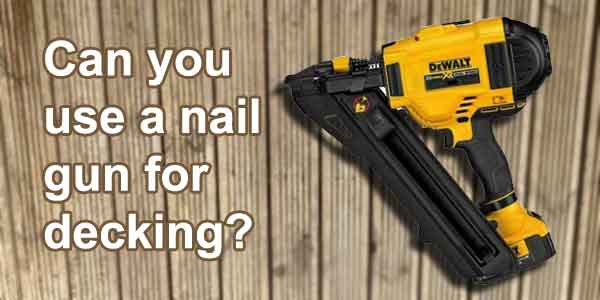Can you use a nail gun for decking?
In this article, we will be looking at whether you can use a nail gun for decking. This will include the entire build process, including the construction of the frame, and fixing down your decking boards. In theory, you could use a nail gun for every part of your decking. This includes building the frame […]
Can you use a nail gun for decking? Read More »



